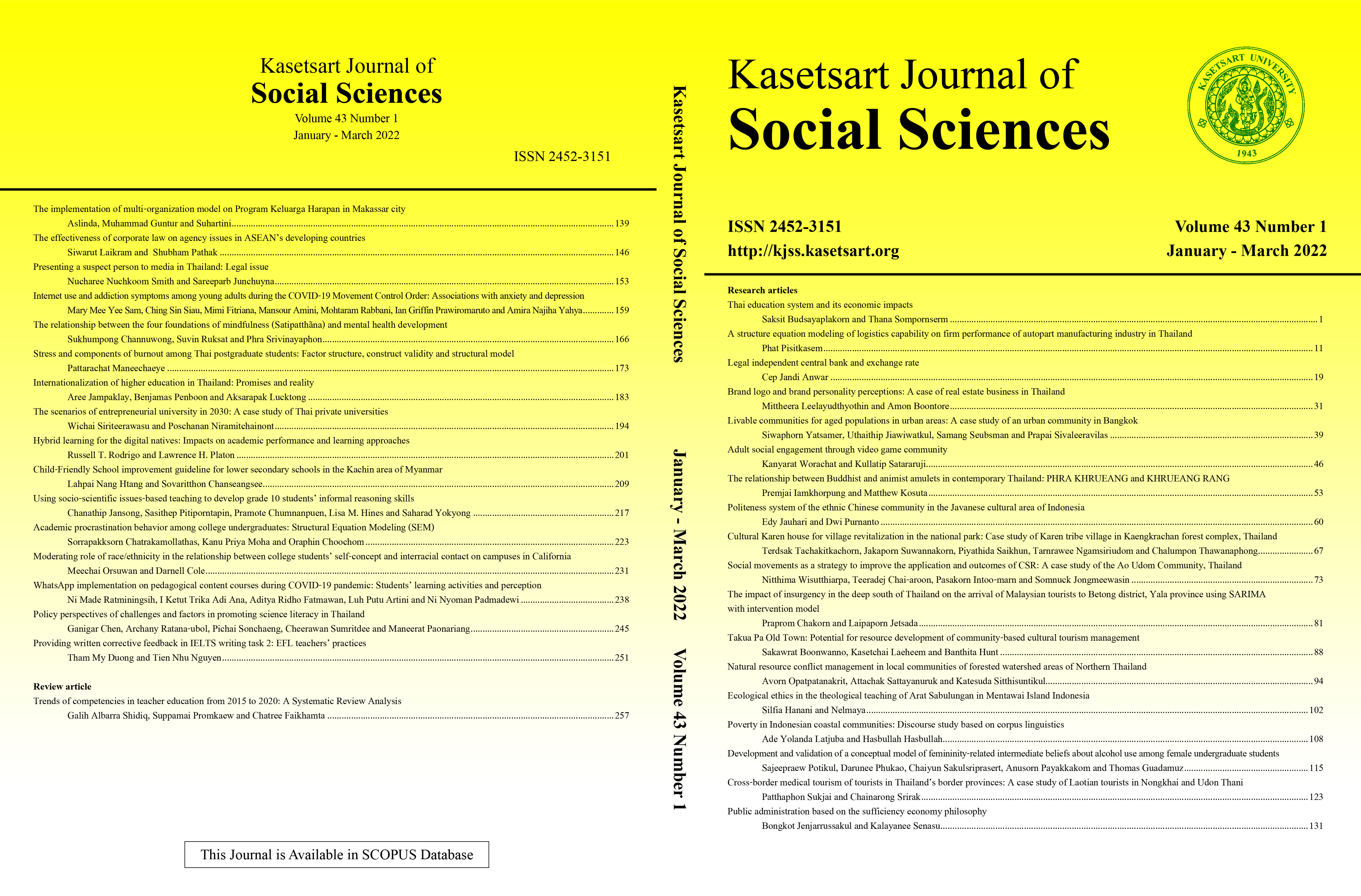Livable communities for aged populations in urban areas: A case study of an urban community in Bangkok
Keywords:
aged population, community development, livable communities, urbanizationAbstract
This article aimed to study the characteristics of livable communities for aged populations in urban Thailand, factors affecting development of these communities, and guidelines to improve the current situations. The study used mixed methods. Quantitative data were collected through a questionnaire survey of 242 aged persons in one urban community in Bangkok with a high proportion of elderly residents. Qualitative data were collected by In-depth interviews with 12 key informants and 4 focus group discussions involving 35 others members of the public, and people from government and business sectors. Quantitative data were analyzed by frequencies, percentages, means, and standard deviations. Qualitative data were probed by content analysis. Quantitative findings, on a scale 1–5, produced average scores for livable conditions in 4 categories (health, economy, society, and environment) with category means of 2.37, 2.41, 2.31, and 2.30 respectively. Each category included variables derived from the conceptual framework and each variable was scored on the questionnaire. Qualitative data produced on community development included the individual potential of aged persons, family warmth, community strength, government and private sector support. The guidelines for livable community development for aged persons arising from the study include building cooperative community development networks empowered to improve health, local economy, social relations, and the physical environment.Database development will help implementation. The policy recommendations including the government and private sectors should follow a mutual direction for the community development, integrate all work related to the aged population, and establish the cooperation of the aged population and the community.
Downloads
Published
How to Cite
Issue
Section
License

This work is licensed under a Creative Commons Attribution-NonCommercial-NoDerivatives 4.0 International License.
This is an open access article under the CC BY-NC-ND license http://creativecommons.org/licenses/by-nc-nd/4.0/










